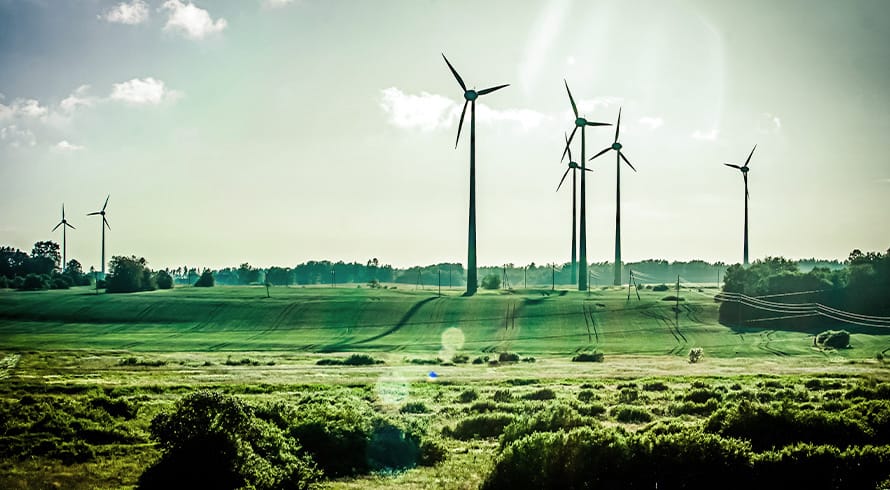Implications of the Carbon Offsets Paper
On 29 April 2014, the National Treasury published the Carbon Offsets Paper (Paper) for public comment. This paper outlines proposals for a carbon offset scheme that will enable businesses to lower their carbon tax liability and enter into investments that will reduce greenhouse gas (GHG) emissions.
Background
At the 2009 UN Climate Change Conference, South Africa voluntarily committed to reduce its GHG emissions by 34% by 2020 and 42% by 2025, respectively. In response to this commitment, in 2011, South Africa adopted the national climate-change response policy, which comprises of a ‘package’ of measures designed to deal with both the reduction of GHG emissions (mitigation) and to ensure climate-change resilience through public investments (adaptation).
The introduction of this climate-change ‘package’ was announced in the 2012 and 2013 Budgets.
It was further proposed that carbon tax would be implemented in 2014 at a rate of R120 per ton of CO2 on direct emissions. This rate was to be increased at 10% per year during the first implementation phase. Following these proposals, the 2013 Budget proposed the implementation of carbon tax effective 1 January 2015, in accordance with the previously suggested rates.
After public consultation however, the National Treasury and the Department of Environmental Affairs agreed to align the design of the carbon tax and proposed emission reduction outcomes.
Consequently, the implementation of carbon tax has been postponed to 2016 to allow for this process of realignment as well as to ensure that there is adequate time for consultation on draft legislation. The postponement of carbon tax implementation was interesting in light of the failure of carbon taxes in Australia.
The carbon-offset scheme is meant to complement the carbon tax that South Africa plans to introduce from 2016.
What is a ‘carbon offset’?
The World Resources Institute defines a carbon offset as “a unit of carbon dioxide-equivalent that is reduced, avoided, or sequestered to compensate for emissions occurring elsewhere”. A carbon offset can also be described as a monetary investment in a project or activity elsewhere that abates GHG emissions or sequesters carbon from the atmosphere that is used to compensate for GHG emissions from your own activities. Offsets can be bought by a business or individual in the voluntary market (or within a trading scheme) and one carbon offset usually represents one ton of carbon dioxide-equivalent.
The Kyoto Protocol has sanctioned offsets as a way for governments and private companies to earn carbon credits that can be traded on a marketplace.
Essentially a carbon offset is an activity that compensates for the emission of carbon dioxide or other GHGs by providing for an emission reduction elsewhere. Carbon offsets enable firms to cost-effectively lower their carbon tax liability through financial support of projects that reduce the emission of GHGs in the short- or long-term. Carbon offsets are proposed to drive investment in GHG projects which may in turn generate considerable sustainable development benefits in South Africa.
Eligibility criteria
For the effective implementation of a carbon offset mechanism, the Paper proposes the following eligibility criteria for carbon offset projects:
- To encourage the development of locally-based projects and GHG mitigation in South Africa, only South African-based credits will be eligible for use within the carbon offsets scheme;
- To prevent double counting of the carbon reduction benefit, only projects that generate carbon offset credits must occur outside the scope of activities that are subject to the carbon tax;
- A list of eligible projects will be introduced as a starting point to provide certainty and stimulate investment decisions and project development in the carbon offsets market.
A list of ineligible projects will also be introduced so as to include projects that would be implemented within the scope of taxable activities following the introduction of the carbon tax;
- Projects that have little co-benefits and low value, such as the mitigation of industrial gasses, should also be excluded; and
- Projects registered or implemented prior to the introduction of the carbon tax regime will be accepted to the scheme, subject to the fulfilment of specified conditions.
Eligible project types
According to the Paper, an analysis of GHG-mitigation potential in various areas could be used to determine priority areas, where the development of carbon offset projects should be incentivised. It is important to note in this regard that the project types should be included based on their positive impact towards the transition to a low-carbon economy, climate change response as well as sustainable development benefits.
Accordingly, the Paper has identified the following areas as priority areas for the development of carbon offset projects:
- Energy and energy efficiency;
- Transport;
- Agriculture, forestry and other land uses; and
- Waste
Ineligible project types
Based on the eligibility criteria set out above, it is clear that there are specific carbon offset project types that would be excluded from the scheme.
These would essentially include projects that would be developed inside the carbon tax net. These project types are specifically excluded in order to prevent a potential double counting of financial benefits that could increase distortions in the carbon credit marketplace, with the entity generating the credits potentially being able to sell the credits to other entities for lower prices than projects in sectors that are not covered by the tax. Projects benefiting from other government incentives should also be excluded.
Accordingly, projects that could potentially result in a double incentive will therefore not be allowed.
These projects would specifically include –
- Energy efficiency projects implemented on activities that are owned or controlled by companies that are covered by the carbon tax;
- Projects that benefit from the Energy Efficiency
Tax Incentive;
- Cogeneration of renewable energy projects implemented on activities that are owned or controlled by companies that are covered by the carbon tax;
- Fuel-switch projects implemented on activities that are owned or controlled by companies that are covered by the carbon tax; and
- Renewable energy projects developed under the Renewable Energy Independent Power Producer Programme (REIPPP).
Carbon offsetting has gained some momentum mainly among consumers in western countries who have become aware and concerned about the potentially negative environmental effects of energy-intensive lifestyles and economies.
Accordingly, the use of carbon offsets to reduce the carbon tax liability for South African entities would mirror current trends in a number of jurisdictions that employ economic instruments to reduce GHG emissions.
The National Treasury, the Department of Environmental Affairs and the Department of Energy have invited the public to comment on the Paper by 30 June 2014.
The information and material published on this website is provided for general purposes only and does not constitute legal advice. We make every effort to ensure that the content is updated regularly and to offer the most current and accurate information. Please consult one of our lawyers on any specific legal problem or matter. We accept no responsibility for any loss or damage, whether direct or consequential, which may arise from reliance on the information contained in these pages. Please refer to our full terms and conditions. Copyright © 2026 Cliffe Dekker Hofmeyr. All rights reserved. For permission to reproduce an article or publication, please contact us cliffedekkerhofmeyr@cdhlegal.com.
Subscribe
We support our clients’ strategic and operational needs by offering innovative, integrated and high quality thought leadership. To stay up to date on the latest legal developments that may potentially impact your business, subscribe to our alerts, seminar and webinar invitations.
Subscribe



